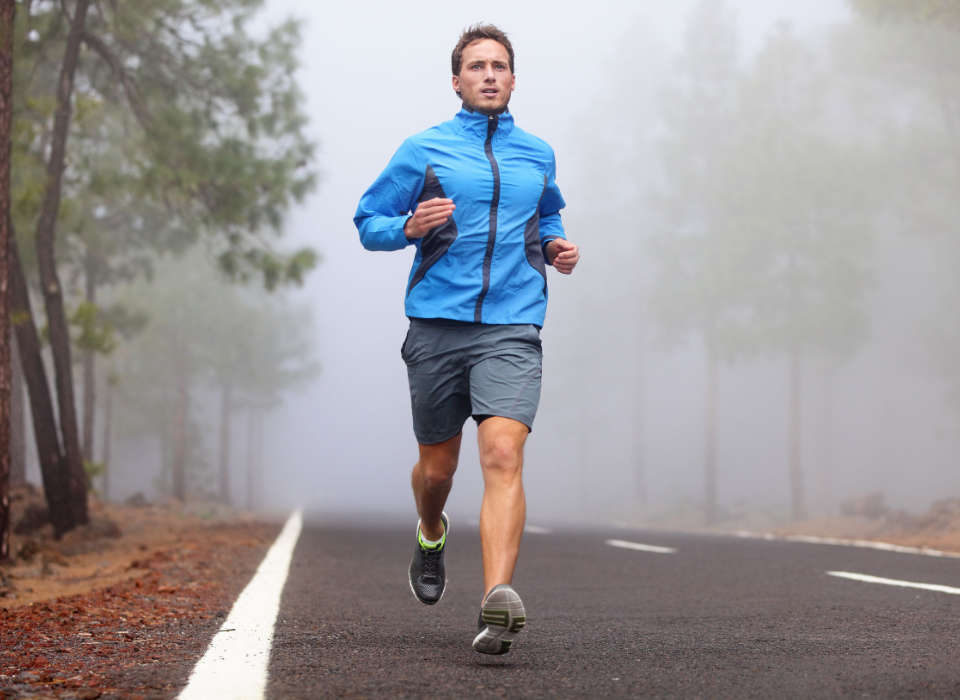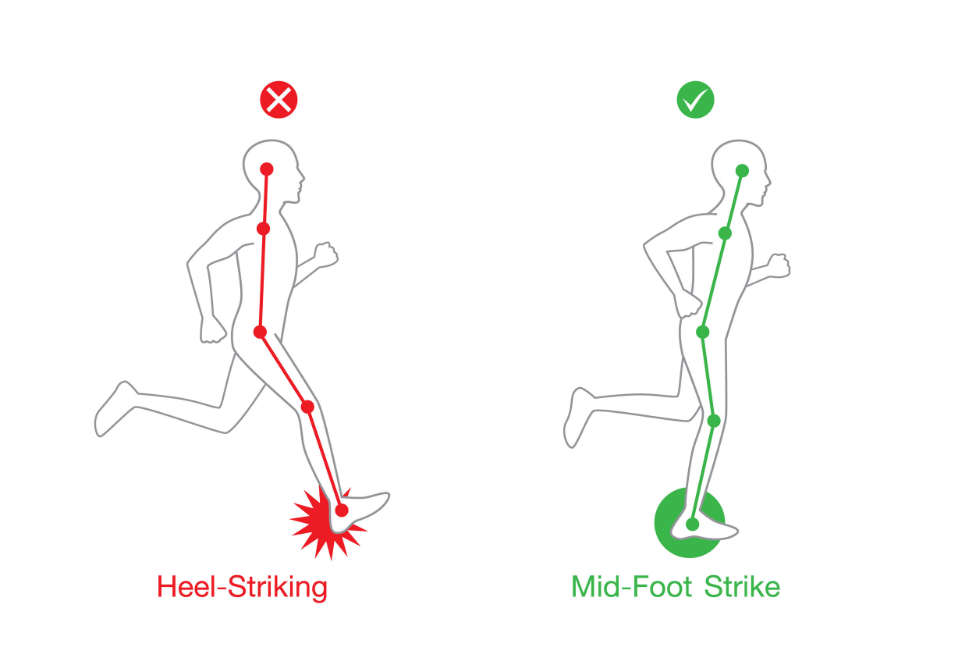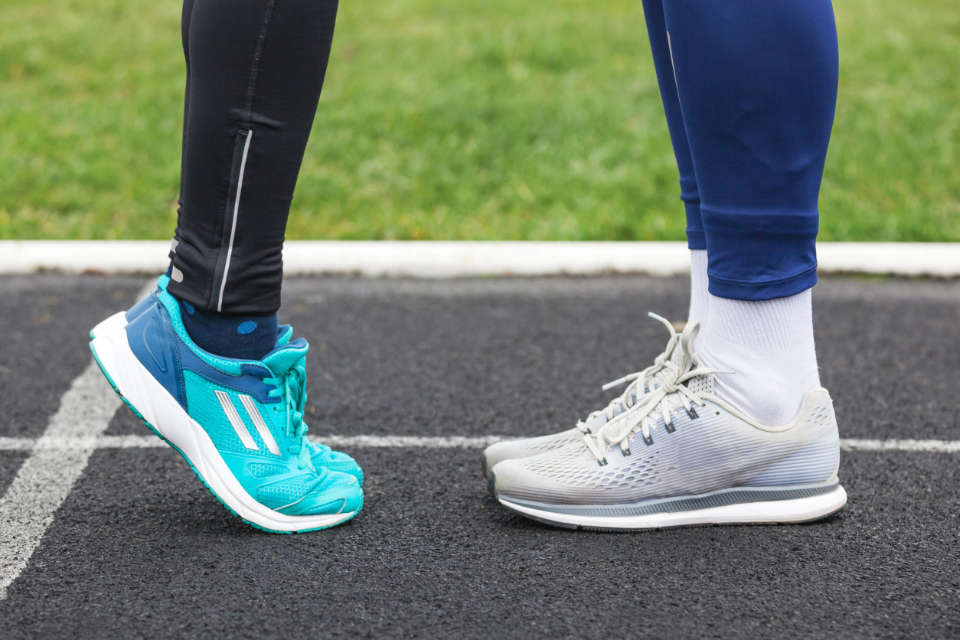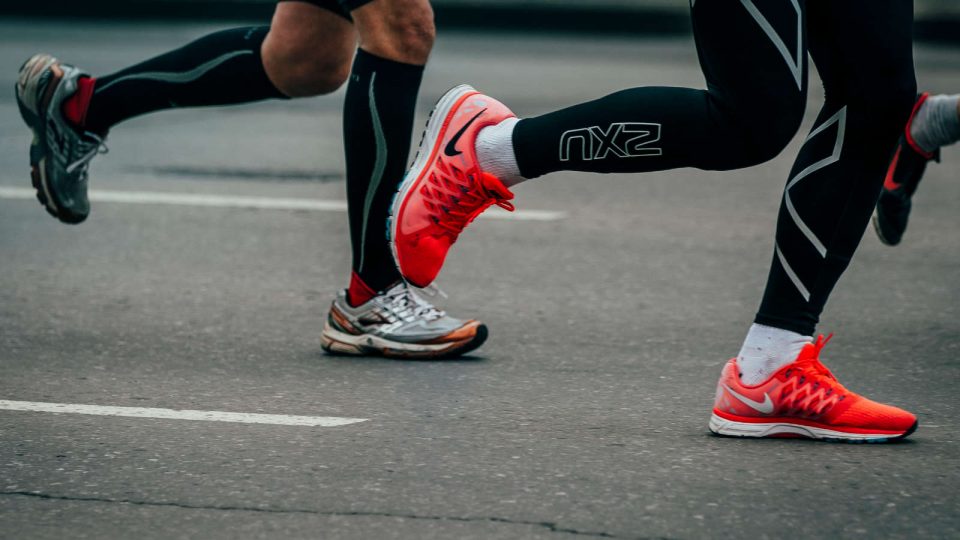The running community is full of heated debates about footwear, diet, hydration, and proper running technique. Chief among these debates is one about how and where your foot strikes the ground.
In fact, much of the debate about running shoes, minimalism, maximalism, and heel-to-toe drop stems from the debate about the proper way to land when running. Let’s start by looking at the basic ways to land.
Heel Striking
If you’re a heel striker, it means that when you run, the heel of your foot is the first part to hit the ground. Foot strikers make up the majority of runners, which is why many popular shoes feature extra cushioning in the heel.
While this type of running is common, many experts suggest that landing heel first acts as a breaking mechanism that halts forward momentum and places undue stress on your knees and hips.
The research is mixed on whether or not heel striking is impacted by shoe type, but the experts agree that heel striking is most often associated with over-striding. When your foot lands too far in front of you, you are likely to land on your heel.

Toe Striking
As the name suggests, toe strikers tend to land on the front of their foot when they run; this type of landing is more common among sprinters than endurance runners or casual 5K runners. Landing on the toes distributes the impact of running completely differently than heel striking.
Instead of absorbing the impact through knees, toe strikers do so through their ankles and Achilles tendons. Landing on your toes could also force much of the work of running on to your calves and eventually lead to shin splints at longer distances.
Mid-foot Striking
Somewhere between the heel striker and the toe strikers lies the mid-foot striker who lands on the balls of the feet – the part between the arch and the toes. Many experts suggest that mid-foot striking is the preferable way to land when running and applies to both long and short distance runners and sprinters.
By striking with the mid-foot, you can maintain your forward momentum and minimize additional stress on your joints. You may also find improved balance, control, and eventually speed when landing on the mid-foot.

What About Where Your Foot Lands?
We’ve discussed how the foot lands, but what about where it lands? While research that suggests that runners should land with their feet directly under their center of gravity has been discredited, shorter strides are likely to improve running economy.
A 2011 paper by researchers at Leeds Beckett University in Britain found that near-elite runners averaged foot placement about 31 to 34 centimeters in front of their center of gravity.
This was true regardless of their cadence – strides per minute – and their overall stride length, which means that these efficient runners were able to shift their center of gravity forward as they increased their stride length.
Where your foot hits the ground has far more impact on running efficiency than the type of foot strike you choose to run with.
What Is The Best Running Form?
To run with proper form, you should focus on getting your feet as close under your hips as possible. This helps reduce the amount of braking your body experiences with each step. To achieve this, maintain a high cadence and aim for midfoot landing.
How Can I Change My Running Technique?
If you are hoping to become a more efficient runner and reduce the long-term risk of injuries and joint pain, then you can make small changes over time to your running technique.
Be careful making a deliberate change to your foot strike, as you may end up exerting more effort in the process. Instead, start by shortening your stride and aiming for a cadence of 170 to 180 strides per minute.
By taking more strides at shorter lengths you will reduce the likelihood of heel striking without making a conscious change to your landing.
Next, condition yourself to mid-foot landing by working plyometric movements – like high knees, power skips, butt-kicks, and ladder drills – into your workouts.
These agility drills focus on movements that are quick and often lateral, which will naturally require you to stay on the balls of your feet. These movements will help condition you to land on your mid-foot naturally.

Should I Change My Running Shoe?
Shoe choice is where the debate over landing really heats up. Traditional running shoes have a raised heel with cushioning to protect that heel that you probably land on over and over again.
So the question for you is really whether you want a shoe that accommodates your current form – by cushioning the heel – or a zero-drop shoe with a consistent height that promotes mid-foot striking by making heel-striking less comfortable.
It is possible to change your landing without changing shoes, but if you want to discourage yourself from falling back on bad habits, it may be worth a shot to adopt a shoe with a short heel-to-toe drop.
Become a Better Runner
Runners who aim to increase endurance, speed, and efficiency, changing from a heel striker to a mid-foot striker will eventually become necessary.
There are many ways to make that transition, some of which were covered above, but there are certainly other methods.
Different foot strike patterns and different running shoes affect the activation of lower body muscles during running.
Studies have shown that individuals have different running strategies, but the mass of the running shoes can change the coordination of running patterns and running strategies.
Both light shoes and heavy running shoes can lead to muscle fatigue and subsequent muscle damage.
Therefore, it is recommended that runners choose running shoes according to their own muscle strength, and adapt to changes in shoe weight before long-term training, so as to reduce the occurrence of injuries and discomfort.
Have you recently made changes to your landing technique? What were your strategies to do so? Maybe you’ve made the change from traditional running shoes to zero-drop, minimalist, or even barefoot. Did it make you a better runner?
More About Running Footstrike
What is a Footstrike in running?
Footstrike describes which part of a runner’s foot—the rear foot, midfoot, or forefoot—makes initial contact with the ground while running. Various factors such as running technique, gradient, surface, running speed, and running shoes can all change footstrike pattern.
What is the best foot strike angle for running?
Most professional runners have a stride angle of 80 degrees or greater. However, for recreational runners, a stride angle between 60 and 65 degrees is considered appropriate.
Is heel striking good for running?
Heel striking can slows you down and puts stress on your knees. Maintain normal or neutral pronation with your feet by rolling them inward slightly. This allows your feet to properly absorb the shock of landing while keeping your lower body aligned.
Should I change my foot strike when running?
Research shows that switching to midfoot or forefoot strikes does not improve running economy, eliminate the effects of foot-ground contact, or reduce the risk of running-related injuries.






1 Comment
This is a great technique to run, I’ve bookmarked the page to read over and over again